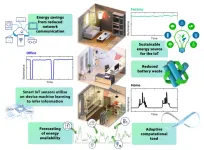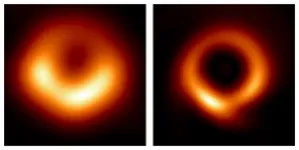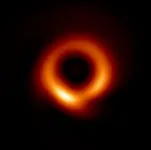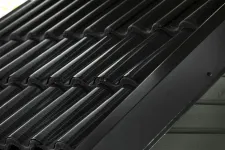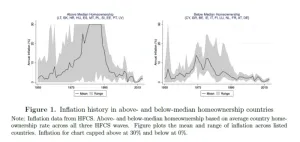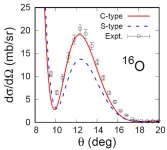(Press-News.org) Newcastle University researchers have created environmentally-friendly, high-efficiency photovoltaic cells that harness ambient light to power internet of Things (IoT) devices.
Led by Dr Marina Freitag, the research group from the from School of Natural and Environmental Sciences (SNES) created dye-sensitized photovoltaic cells based on a copper(II/I) electrolyte, achieving an unprecedented power conversion efficiency of 38% and 1.0V open-circuit voltage at 1,000 lux (fluorescent lamp). The cells are non-toxic and environmentally friendly, setting a new standard for sustainable energy sources in ambient environments.
Published in the journal Chemical Science, the research has the potential to revolutionise the way IoT devices are powered, making them more sustainable and efficient, and opening up new opportunities in industries such as healthcare, manufacturing, and smart city development.
Dr Marina Freitag, Principal Investigator at SNES, Newcastle University, said: "Our research marks an important step towards making IoT devices more sustainable and energy-efficient. By combining innovative photovoltaic cells with intelligent energy management techniques, we are paving the way for a multitude of new device implementations that will have far-reaching applications in various industries.”
The team also introduced a pioneering energy management technique, employing long short-term memory (LSTM) artificial neural networks to predict changing deployment environments and adapt the computational load of IoT sensors accordingly. This dynamic energy management system enables the energy-harvesting circuit to operate at optimal efficiency, minimizing power losses or brownouts.
This breakthrough study demonstrates how the synergy of artificial intelligence and ambient light as a power source can enable the next generation of IoT devices. The energy-efficient IoT sensors, powered by high-efficiency ambient photovoltaic cells, can dynamically adapt their energy usage based on LSTM predictions, resulting in significant energy savings and reduced network communication requirements.
Reference:
Michaels, H., Rinderle, M., Benesperi, I., Freitag, R., Gagliardi, A., & Freitag, M. (2023). Emerging Indoor Photovoltaics for Self-Powered and Self-Aware IoT towards Sustainable Energy Management. Chemical Science. https://doi.org/10.1039/d3sc00659j
--ends--
END
Scientists create high-efficiency sustainable solar cells for IoT devices with AI-powered energy management
2023-04-13
ELSE PRESS RELEASES FROM THIS DATE:
A sharper look at the M87 black hole
2023-04-13
The iconic image of the supermassive black hole at the center of M87—sometimes referred to as the “fuzzy, orange donut”—has gotten its first official makeover with the help of machine learning. The new image further exposes a central region that is larger and darker, surrounded by the bright accreting gas shaped like a “skinny donut.” The team used the data obtained by the Event Horizon Telescope (EHT) collaboration in 2017 and achieved, for the first time, the full resolution of the array.
In 2017, the EHT collaboration used a network of seven pre-existing telescopes ...
Gentle method allows for eco-friendly recycling of solar cells
2023-04-13
By using a new method, precious metals can be efficiently recovered from thin-film solar cells. This is shown by new research from Chalmers University of Technology, Sweden. The method is also more environmentally friendly than previous methods of recycling and paves the way for more flexible and highly efficient solar cells.
Today there are two mainstream types of solar cells. The most common is silicon-based and accounts for 90 percent of the market. The other type is called thin-film solar cells which in turn uses three main sub-technologies, one of which is known as CIGS ...
Infant formulas promise too much
2023-04-13
Many infant formulas promise a lot. Several products claim that they help develop the brain, increase immunity and promote children's growth and development, among other things.
Now a research group led by Imperial College London has looked at whether these promises have any substance to them. The article has recently been published in BMJ.
“Most of the claims about the health-giving and nutritional properties of breast milk substitutes seem to be based on little or no evidence,” the research group says.
Claims surrounding these replacement milk products are controversial. They can give the impression ...
CESJ selected for the ERC grant to launch a European program of science journalists in residence
2023-04-13
Milan (Italy), 13 April 2023 – The Center for Ethics in Science and Science Journalism (CESJ, www.cesj.eu) is among the partners of the FRONTIERS consortium that was selected by the European Research Council for a grant of 1.5 million euro to establish a residency program for science journalists in research institutions across Europe, and measure its impact on the lifelong professional development of science journalism in Europe. The consortium also includes the NOVA University of Lisbon (Portugal), ...
Living through high inflation increases home ownership
2023-04-13
People who experience periods of high inflation are more likely to buy a home, according to a new study from the University of California San Diego’s Rady School of Management.
The paper, to be published in The Journal of Finance, uses various sources of data which reveal households that have been exposed to high inflation are more likely to invest in real estate. The study suggests many homeowners buy because they are motivated to protect themselves from possible future price hikes.
The study is the first to reveal that personal ...
Eastern wolves evolved separately from grey wolves
2023-04-13
A new paper in Molecular Biology and Evolution, published by Oxford University Press, provides interesting new evidence about the evolution of North American wolves, which has been a subject of debate among conservationists and taxonomists.
Southeastern Canada is home to populations of wolves and coyotes whose origins and genetic relationships have long puzzled scientists. In particular, eastern wolves have been the subject of great dispute, and it remains unknown whether these canids represent ...
Visualizing differences in nuclear structure
2023-04-13
Helium usually has two protons and two neutrons strongly bound to each other, often forming a substructure within the nucleus. A nucleus composed of several such substructures is called a cluster structure. In the standard picture, nuclei are difficult to understand in terms of so-called shell structure; because there was no way to clearly distinguish whether each nucleus has a cluster or a shell structure.
Associate Professor Wataru Horiuchi and Professor Naoyuki Itagaki from the Osaka Metropolitan University Graduate School of Science, have developed an ...
The Lancet Neurology: Identifying ‘hallmark’ Parkinson’s disease protein build-up could aid early detection and pave way for improved diagnosis and treatment
2023-04-13
Cross-sectional study of 1,123 participants confirms α-synuclein seed amplification assay (αSyn-SAA) technique is highly accurate at identifying people with Parkinson’s disease.
The technique detects at-risk individuals and those with early, non-motor symptoms of Parkinson’s disease prior to diagnosis, suggesting that a positive result on αSyn-SAA may be an early indicator of disease onset.
Differences in the frequency of a positive αSyn-SAA result were detected based on age and sex, and if people ...
Free trade deal is a major threat to UK public health, warn experts
2023-04-13
The UK’s decision to join one of the world’s largest free trade agreements, known as the Comprehensive and Progressive Agreement on Trans-Pacific Partnership (CPTPP), poses a major threat to UK public health, warn experts in The BMJ today.
In acceding to the CPTPP, the government hopes to boost trade, improve economic growth, and strengthen the UK’s strategic position as a global rule setter.
But Courtney McNamara and colleagues argue that free trade deals have serious and wide ranging implications for public health and ...
Female healthworkers need better radiation protection to minimise breast cancer risk
2023-04-13
Women working in healthcare who are regularly exposed to radiation from x-rays and other imaging procedures need better ionising radiation protection to help minimise their risk of developing breast cancer, argue doctors in The BMJ today.
Ionising radiation is a known human carcinogen and breast tissue is highly radiation sensitive. As such, there are concerns that regular exposure to ionising radiation during image guided procedures may be linked to a higher risk of breast cancer in female healthcare workers.
Personal protective equipment (PPE) such as lead gowns are used to shield the body from harmful radiation during these ...
